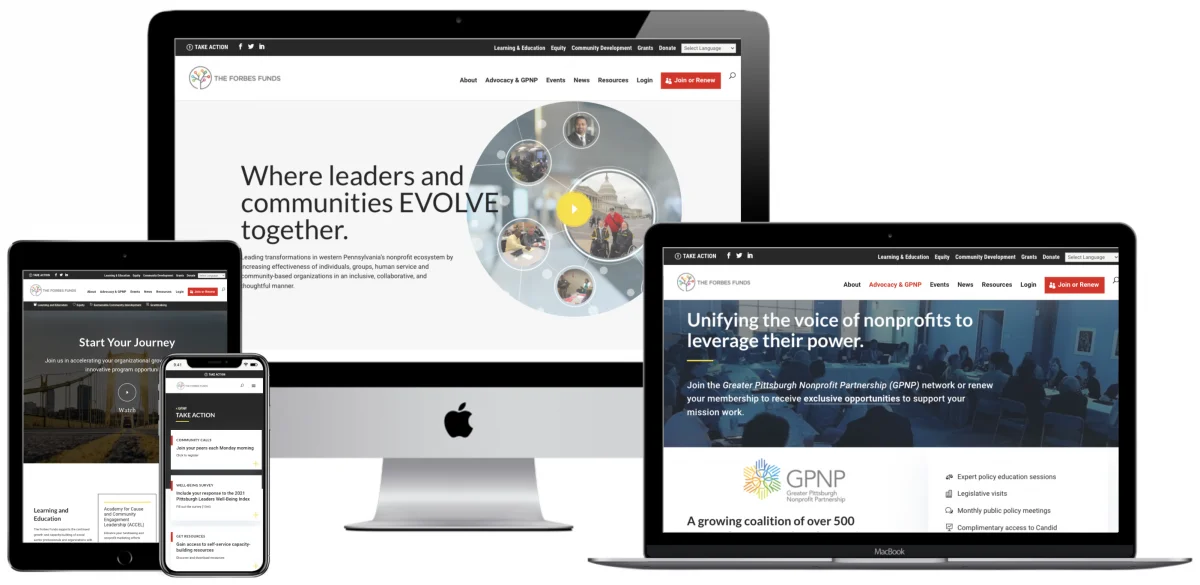Mobile performance matters. Even a hundredth of a second may be the difference between enhancing the user’s experience or increasing your bounce rate. The average load speed for a mobile website is 15 seconds. If you move your load speed needle down by just a fraction, you will see increased revenue. However, 53% of users will leave a page if it takes more than 3 seconds to load, so if you’re close to the ‘average,’ you’ve just lost half of your customers or clients. But fear not! It’s an easy fix.
Designing your website for mobile-first and people-first is an important objective to help customer’s in their journey. Here’s why designing for people-first matters, especially why mobile-first isn’t just a ‘nice to have’ it’s a necessity.
1. Make the content users want to see easy to find
Designing with people in mind means that you show the user the content they want to see first or make it incredibly easy to find and navigate. Websites stack on different sizes, but with mobile-first you want to give them answers to questions they may have, to solve the user’s tasks that they came to your site to complete, as quickly as you can.
Some user tasks are simple such as the user may want to find your company’s phone number. Can they find that information in under 30 seconds? They should be able to! So, for a further example, if you’re a cafe, people might want to be able to find your menu or your address first. You want to make it intuitive and easy to navigate your website as well as ensure that page loading speeds are as fast as possible.
2. Clean up your code to enhance website performance
Designing for mobile-first means that your website will run faster. Ways to clean up your code include reducing inefficient JavaScript, which can slow down your page. Next, you can decrease the time your site spends parsing, compiling, and executing your code. Another step is to defer any offscreen images since users cannot see those images when a page loads, so removing them will automatically increase page speed. Reducing image sizes in general is a good idea since images are resized for mobile anyway. Use a smaller image format where possible. Next, use the ‘font-display CSS’ feature so that while web fonts are loading the text is visible to your user. Improve any JavaScript and Cascading Stylesheets (CSS), which means your site will only need to load one document at a time for each site visit instead of loading hundreds of dozens of lines of code for every page–it’ll just reference the script. And finally, reduce the size of network requests and payloads to increase website speed. Use cache so pages do not have to generate for every session. Clean up your redirects so that your website doesn’t have to work too hard behind the scenes, slowing down what your user sees. Google has a feature that allows you to test website speed to make improvements.
In one Google case study, they discovered that ‘browser caching, image optimization, and prioritizing content on the visible part of its mobile pages’ meant that not only did load time increase for this company, but website traffic increased by 33%, increasing mobile revenue by 45%. Small changes can have a massive impact on your business, which is why optimizing for speed through these simple changes (and others) needs to be a business priority.
3. Consider the ‘age of assistance’
When designing your site, you have to keep users in mind at every step in the design process, especially in the ‘age of assistance.’ With many people conducting voice searches and with Amazon’s happy path, voice-first concept, you have to ensure that your website will answer any voice queries as well as text queries. We have a piece on how to optimize your website for voice assistants here.
Another way to optimize for the ‘age of assistance’ is by creating an Alexa developer account, which can guide you through setting up your website to be voice-friendly. When creating anything from web pages to blog posts to website copy to the way you write your address and phone number and more needs to be written in a way that a voice search and recognize; every query should be voice-search friendly to enhance the user experience.
4. Think about parallel tracking
Google is launching parallel tracking this May 2019. That means that visitors can get to your landing pages faster. When a user clicks an advertisement, the tracking feature can slow down your load speed, which means you may increase your bounce rate due to unhappy customers.
Google has come up with a parallel tracking solution to reduce that load speed by hundreds of a millisecond (which can have a bigger impact than you’d imagine). So, if you add parallel tracking, users get to go right to your landing page and then the browser will process the URL tracking request (so you can see how your campaigns are performing) in the background. On slower websites, that means that users reach your landing pages several seconds faster than in the past. When users can engage with your content quickly, you reduce your wasted ad spend and potentially increase conversions.
5. Understand SMAC
SMAC, which stands for Social, Mobile, Analytics, and Cloud is a concept that these four technologies have converged to improve business operations, reaching customers for minimal overhead and maximum output. Since the widespread use of structured and unstructured data thanks to mobile devices, wearables, social media, rewards’ card programmes, web browsing, and so forth, there’s a new business model based on customer-generated data. Although this point doesn’t have a direct bearing on load speed, it does have an impact on ‘people-first’ in design. Customers want to be able to interact with businesses in meaningful ways–and be able to reach them when it matters.
Together these four have been disruptors and, as a business, you need to harness all four to fully realize any digital and real-world business. Social media has meant businesses can directly interact with their customer base. The increase and advance of mobile technologies have changed the way customers browse, shop, and interact with their environment. Analytics means that if businesses do not have a way to track metrics, they may miss out on vital pieces of their marketing puzzle, ways they can reach and help more people. There are several tools that help businesses track their progress. And, finally, cloud computing provides a new way to build infrastructure and access data.
Netflix as an example has harnessed SMAC seamlessly. Users can watch Netflix content on their iPads, for example. They can sign into their accounts and link them with social media. Their all-at-once release structure means that they can create social media buzz. Users can then rate and share content and interact with other users online. Customer data is stored in the cloud and Netflix tracks its metrics; they even know which show is the most watched when people sign up for a free trial or how many times you’ve watched your favourite film. All of these strategies combine to ensure that Netflix is at the top of its game. Businesses need to focus on integrating all four of these to stay relevant in the market and keep ahead.
Need help improving your mobile speed and designing your website for your constituents and customers?
If you’re unsure how to make these changes, get in touch. At Key Medium, we just won the 2019 Gold AVA Digital Award for Mobile Web- Information Experience.

Elaine Frieman holds a Master’s Degree and is a UK-based professional editor, educational writer, and former marketing agency content writer where she wrote articles for disparate clients using SEO best practice. She enjoys reading, writing, walking in the countryside, traveling, spending time with other people’s cats, and going for afternoon tea.

